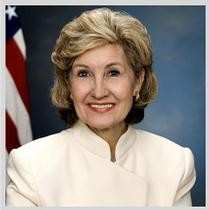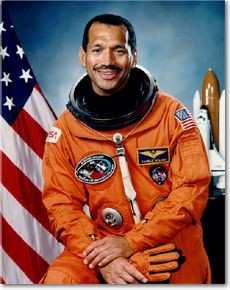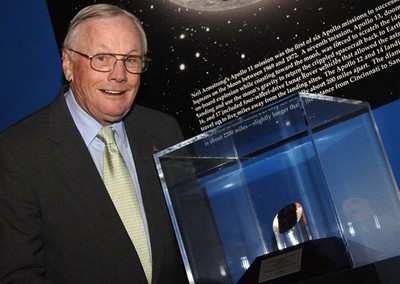Senate Commerce, Science, And Transportation Committee Hears
Discussion Of The Future Of Humans In Space
 The U.S. Senate Committee on Commerce, Science, and
Transportation held a full committee hearing Thursday on the future
of U.S. human space flight. NASA Administrator Charles Bolden,
Astronauts Neil Armstrong (Apollo 11) and Eugene Cernan (Apollo
17), Norman Augustine, who chaired the Augustine Commission on
human spaceflight, and John P. Holdren, Director, Office of Science
and Technology Policy all testified before the committee.
The U.S. Senate Committee on Commerce, Science, and
Transportation held a full committee hearing Thursday on the future
of U.S. human space flight. NASA Administrator Charles Bolden,
Astronauts Neil Armstrong (Apollo 11) and Eugene Cernan (Apollo
17), Norman Augustine, who chaired the Augustine Commission on
human spaceflight, and John P. Holdren, Director, Office of Science
and Technology Policy all testified before the committee.
Committee chair Senator John D. Rockefeller IV said in his
opening remarks that it is time for NASA to change directions, as
was outlined by the Obama Administration. "I believe we need a new
direction. To many, including myself, defenders of the status quo
for NASA seem to justify their views solely because of the impact
on jobs," Rockefeller said. "I can relate as much as anyone to the
fight for jobs in my state. It is always the utmost priority
– but we must strike a balance between economic development
and modernizing our space program so we can remain competitive for
years to come."

Senator Rockefeller
But Rockefeller said NASA has to first do what is right for the
nation. "NASA’s role cannot stay static. The President has
challenged the United States Government to seek greater
international collaboration, enable commercial services and develop
new exploration technologies. These are good priorities and should
help ensure that in tough fiscal times, we build our space future
in a measured, relevant, innovative, and sustainable way. This is
not easy to do but we can do it – and we must. Because of
budget constraints, NASA’s current budget of $18 billion may
be a high water mark for years to come. We cannot assume the agency
will have unlimited resources for every mission it wants to
undertake. We have to make hard choices."
But ranking Republican Senator Kay Bailey Hutchison, said the
Obama administration was charting the wrong course for the space
agency. "The Administration’s proposal for NASA discards
billions of dollars of important technology and engineering
advancements paid for by American taxpayers, and places us on a
course that relies on a still developing commercial market, to fill
a role carried on for decades by the world's preeminent space
agency,” said Senator Hutchison. “Our 40-year
legacy of leadership in space is on the line and we need to have a
credible plan to take the next step forward, enhancing our
investment over the last four decades. We will get to Mars by
building upon our existing capabilities, including our
infrastructure, prior investment, and the most skilled workforce in
the world.”

Senator Hutchison
Hutchison has proposed stretching out the remaining shuttle
missions over the next two years and adding the standby flight as
an actual flight with available cargo capabilities. “That
would allow for the analysis and careful planning that is needed to
minimize the risk to the space station and bridge part of the gap
to new launch vehicles," she said. "The space station provides our
primary reason for current and future space flight and offers
almost the entire business case for many of the emerging commercial
space companies in the short run. The Administration owes us
an answer why it will not consider stretching out the existing
shuttle fights when the benefits of doing so are apparent. American
exceptionalism demands more, the brave men and women that climb
aboard rockets to explore the frontiers of space require more and,
future generations of American children deserve more.”

NASA Administrator Bolden
NASA Administrator Charles Bolden, an Obama appointee and also a
former astronaut, agreed with Rockefeller that the President has
made the right choices when setting the budget for the space
agency. “The President’s FY 2011 budget request is good
for NASA because it sets the Agency on a sustainable path that is
tightly linked to our Nation’s interests," he said. "The
President recognizes that what is truly needed for beyond low-Earth
orbit (LEO) exploration are game-changing technologies; making the
fundamental investments that will provide the foundation for the
next half-century of American leadership in space
exploration.”

Neil Armstrong
Apollo 11 commander Neil Armstrong told the committee that
the U.S. needs to consider decades of investment in human
spaceflight. "America has invested substantially for more than half
a century to acquire a position of leadership in space. But for any
organization, a public utility, an airline, a university, or an NFL
team, to maintain a leadership position requires steadfast
determination and a continuing investment in the future. That
investment must be made wisely.”

Eugene Cernan
And Eugene Cernan, the last man to walk on the moon, said
America is at risk of falling behind in more than just space
exploration on the current course. “If we abdicate our
leadership in space today, not only is human spaceflight and space
exploration at risk, but I believe the future of this country and
thus the future of our children and grandchildren are as
well.”
But if Senator Rockefeller's statement is any indication,
changes are ahead for NASA. "As we move toward reauthorization, I
firmly believe this committee has a significant oversight role to
play," he said. "NASA cannot continue down the same path."
 ANN's Daily Aero-Linx (04.17.24)
ANN's Daily Aero-Linx (04.17.24) ANN's Daily Aero-Term (04.17.24): Jamming
ANN's Daily Aero-Term (04.17.24): Jamming ANN's Daily Aero-Linx (04.18.24)
ANN's Daily Aero-Linx (04.18.24) Aero-News: Quote of the Day (04.18.24)
Aero-News: Quote of the Day (04.18.24) ANN's Daily Aero-Term (04.18.24): Hold-In-Lieu Of Procedure Turn
ANN's Daily Aero-Term (04.18.24): Hold-In-Lieu Of Procedure Turn








